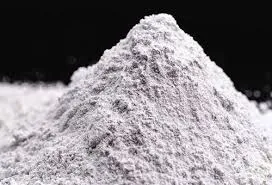
дек. . 11, 2024 11:13 Back to list
hpmc excipient
The Role of HPMC in Pharmaceutical Excipients
Hydroxypropyl methylcellulose (HPMC) is a widely used excipient in the pharmaceutical industry, known for its versatility and effectiveness in various drug formulations. As a semi-synthetic polymer derived from cellulose, HPMC offers unique properties that make it suitable for both oral and topical dosage forms. Understanding the role of HPMC in pharmaceutical excipients not only sheds light on its functionality but also highlights its importance in the overall formulation process.
Properties of HPMC
HPMC is characterized by its water-soluble nature, film-forming ability, and thickening properties. This excipient is non-toxic and has excellent biocompatibility, making it suitable for use in various pharmaceutical applications. One of the most significant advantages of HPMC is its ability to modify the release profile of the active pharmaceutical ingredient (API). By altering the viscosity and concentration of HPMC in a formulation, formulators can create controlled-release systems that enhance therapeutic efficacy and improve patient compliance.
Moreover, HPMC exhibits shear-thinning behavior, making it easy to handle during manufacturing processes such as granulation and tableting. Its gel-like consistency upon hydration allows for increased efficiency in the compaction of powders, leading to the production of high-quality tablets and capsules. This property also aids in achieving uniformity in the distribution of the API throughout the formulation.
Applications in Drug Formulation
HPMC is commonly utilized in a wide range of pharmaceutical applications. In oral solid dosage forms, such as tablets and capsules, HPMC acts as a binding agent, helping to hold the active ingredients together and providing mechanical strength. In conjunction with other excipients, HPMC can also function as a disintegrant or lubricant, facilitating the breakdown of the formulation and ensuring optimal release of the API in the gastrointestinal tract.
hpmc excipient

For controlled-release formulations, HPMC is particularly valuable. Its hydrogel forming ability allows it to swell and create a gel barrier that modulates the rate of drug release. This is especially beneficial for drugs that require sustained therapeutic levels in the bloodstream, as it reduces the frequency of dosing and enhances patient adherence to treatment regimens.
In topical formulations, HPMC serves as a thickener and viscosity modifier in gels and creams. Its film-forming properties help improve the stability and texture of these products, providing a smooth application and enhanced skin feel. Furthermore, HPMC can act as a protective agent, forming a barrier that helps in retaining moisture and enhancing skin hydration.
Regulatory and Safety Considerations
HPMC is recognized as a safe and effective excipient by various regulatory bodies, including the U.S. Food and Drug Administration (FDA) and the European Medicines Agency (EMA). Its safety profile, combined with its efficacy, has made HPMC a preferred choice in the pharmaceutical industry.
However, formulators must consider the potential for variability in the source of HPMC and its molecular weight, as these factors can influence the performance of the excipient in specific formulations. Consistent quality control measures must be implemented to ensure that HPMC used in pharmaceutical applications meets the required standards.
Conclusion
In conclusion, HPMC is an essential excipient in the pharmaceutical industry, offering a breadth of functionalities that enhance drug formulation. Its ability to modify drug release profiles, coupled with excellent physical properties, makes it a versatile choice for both oral and topical applications. As research and development in the pharmaceutical sector continue to advance, the role of HPMC is likely to expand, paving the way for new and innovative drug delivery systems. The ongoing exploration of HPMC's capabilities will undoubtedly contribute to the development of safer, more effective therapeutic options for patients.
-
The Widespread Application of Redispersible Powder in Construction and Building Materials
NewsMay.16,2025
-
The Widespread Application of Hpmc in the Detergent Industry
NewsMay.16,2025
-
The Main Applications of Hydroxyethyl Cellulose in Paints and Coatings
NewsMay.16,2025
-
Mortar Bonding Agent: the Key to Enhancing the Adhesion Between New and Old Mortar Layers and Between Mortar and Different Substrates
NewsMay.16,2025
-
HPMC: Application as a thickener and excipient
NewsMay.16,2025
-
Hec Cellulose Cellulose: Multi functional dispersants and high-efficiency thickeners
NewsMay.16,2025







